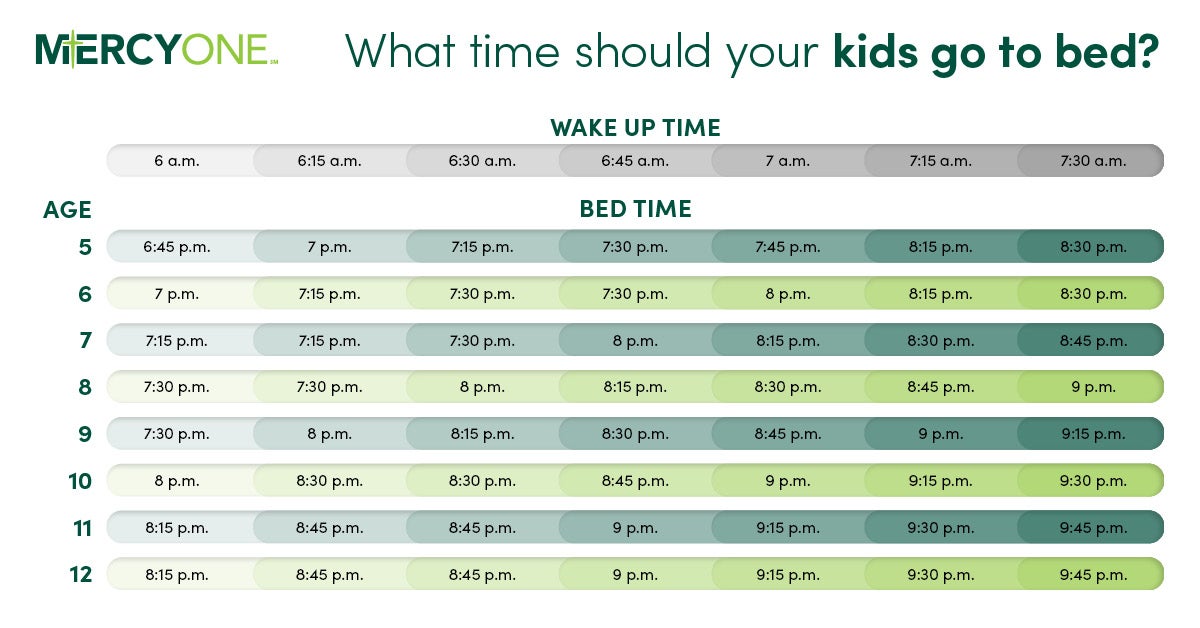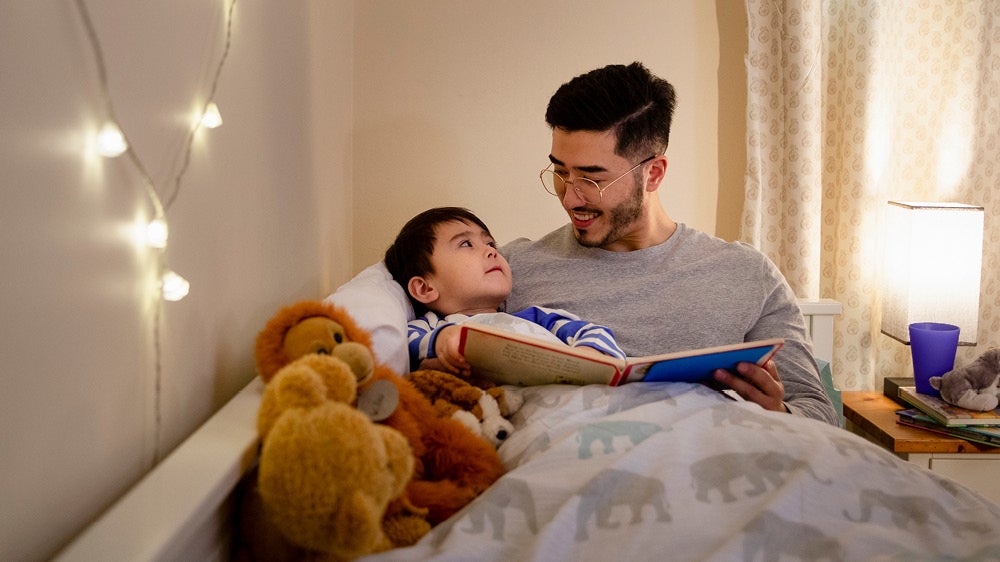When should my school-age child go to bed?
July 30, 2024Categories: Pediatrics Care, Sleep Medicine
If your child has a more relaxed bedtime during the summer, it’s better for their health to begin a sleep routine to prepare for their school schedules. By getting the correct amount of sleep for their age, your child will benefit from improved attention, behavior, learning, memory, emotional control, and mental and physical health.
Learn about how much sleep your child needs, when they should go to bed and the benefits of creating a bedtime routine:
How many hours of sleep should my child get a night?
As children develop, the amount of sleep needed each day fluctuates. Ensure your child gets enough rest by knowing what time he or she needs to get up for school.

As your child gets older and becomes involved in more activities before and after school, try to follow the recommended amount of sleep per their age group.

Why is a sleep routine important for a child?
Just like adults need enough sleep to function properly for their workday, children need enough sleep to think during their school day. A bedtime routine can help your child know when it’s time to go to bed and receive the right amount of sleep each night. Here’s how to create a bedtime routine and the benefits behind it:
- Encourage electronic-free time. Electronics can become a distraction for children and keep them awake longer. Having a set time when children know they have to shut off their devices will help them be less distracted at bedtime.
- Have regular hygiene care. Whether taking a bath or brushing their teeth, it’s a healthy habit for your children to start for their future health. Also, make sure your child goes to the bathroom before going to bed. This can reduce sleep disturbances by preventing them from having to get up in the middle of the night.
- Read a story. Reading a children’s book or making up your own story will create bonding time for your family. During this time, your child can relax and find comfort in your voice.
- Show affection. A kiss, hug or saying, “Goodnight, I love you,” will comfort a child. When trying to fall asleep, it’s important they feel safe and calm.
- Turn on a night light. Being afraid of the dark is normal for a child. By turning on a night light, your child can see without worries. Plus, if he or she does need to get up in the middle of the night to go to the bathroom, they can easily see their surroundings.
If your child is having trouble sleeping, visit your primary care provider to see if they need to visit a sleep medicine location. There are different types of sleep disorders a provider specializing in sleep can help identify and treat.


